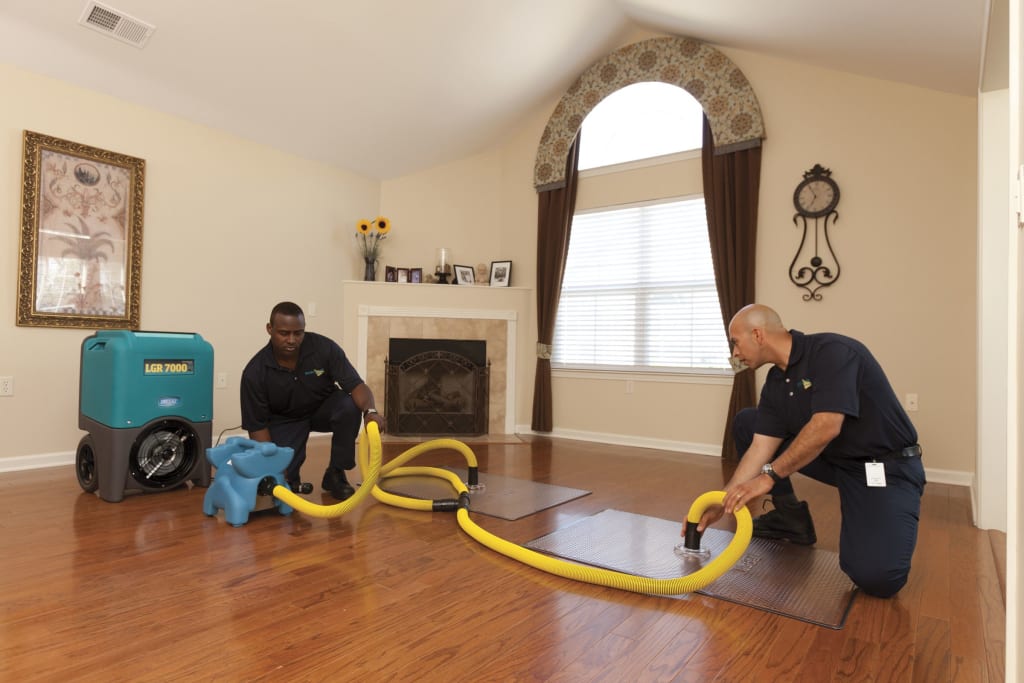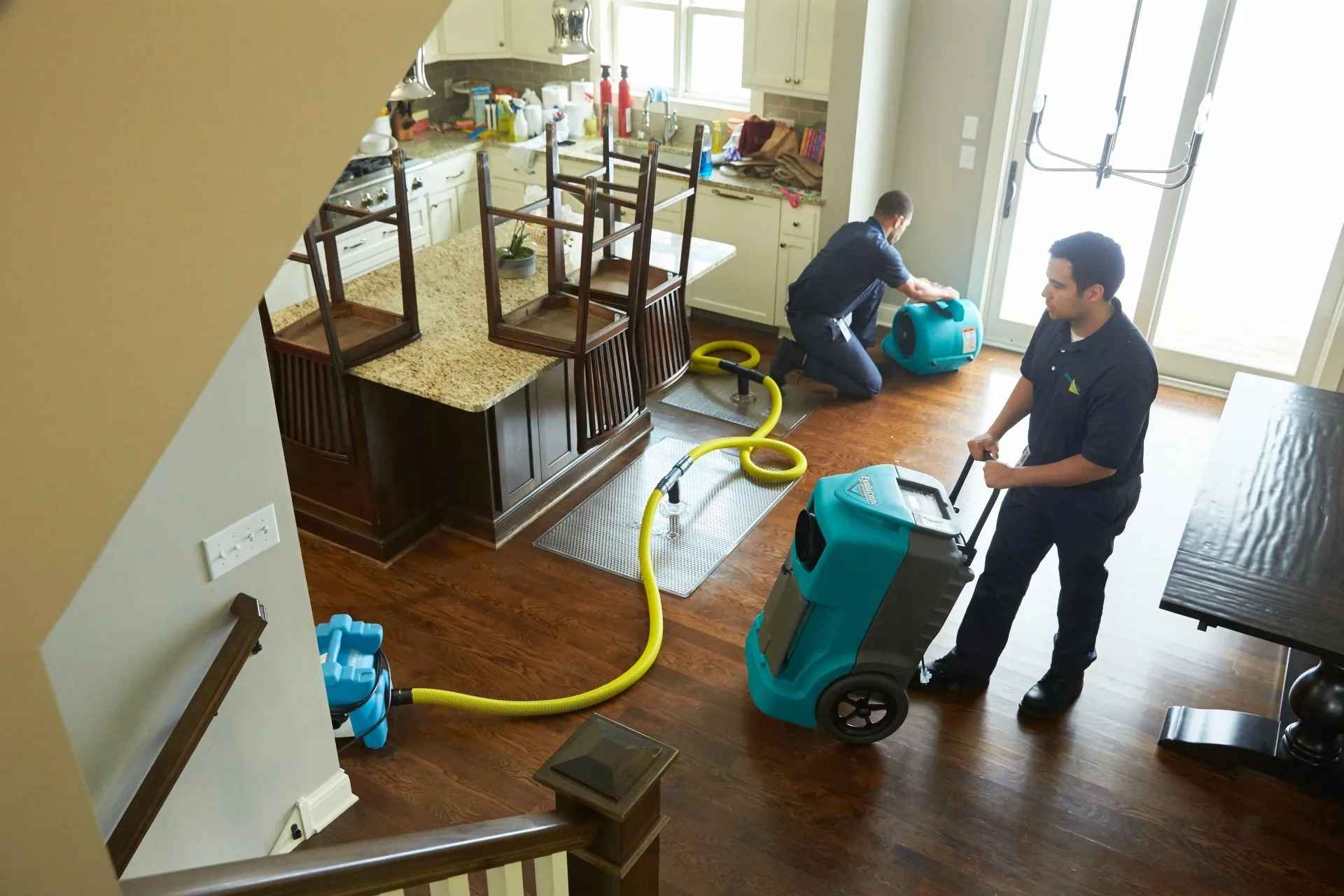Key measures in water damage restoration for homeowners
Wiki Article
All About Water Damage Restoration: Trick Facts and Advantages You Ought To Know
Water damages repair is an important procedure that every house owner should understand. It entails evaluating the kind of damages, whether clean, gray, or black water, and executing a systematic remediation method. Acknowledging the indications of water damages early can significantly affect the efficiency of the reconstruction. Comprehending the actions entailed and the relevance of prompt activity can avoid more problems. What factors should homeowners think about when deciding between expert services and DIY methods?Comprehending Water Damage: Kinds and Causes
What factors add to water damages, and exactly how can they be categorized? Water damage can be categorized right into 3 primary groups: clean water, gray water, and black water. Tidy water originates from sources like broken pipes or rain, posturing minimal health and wellness risks. Gray water, which may originate from home appliances like dishwashing machines or washing equipments, includes impurities that call for careful handling. Black water, stemming from sewer or flooding, presents serious health and wellness threats and needs prompt focus.The reasons for water damage vary. Usual elements include pipes failings, roofing leaks, all-natural disasters, and bad drain systems. Additionally, human mistakes, such as leaving taps failing or running to keep home appliances, can aggravate the trouble. Recognizing these types and creates is essential for efficient avoidance and removal techniques, making certain that property owners can take aggressive steps to protect their homes versus the destructive results of water damage.
Indicators of Water Damage: Just How to Determine Problems Early
Just how can one find the early signs of water damages prior to it rises into a more major trouble? Recognizing these concerns promptly can save home owners from extensive repairs. Usual indications include noticeable water discolorations on ceilings or wall surfaces, which typically show up as yellowish or brown patches. One more indicator is gurgling or peeling paint and wallpaper, suggesting moisture below the surface. Mildewy smells can likewise represent hidden mold growth, a direct result of prolonged wetness. Furthermore, bending or buckling of floors may suggest excess wetness in the underlying frameworks. House owners must routinely inspect areas susceptible to water exposure, such as cooking areas, basements, and washrooms, for any type of signs of leak or wetness. Ultimately, a sudden rise in utility costs may hint at undiscovered leaks. By identifying these very early signs, people can take proactive actions to deal with water damage before it worsens.The Water Damage Repair Refine: Step-by-Step

Next, the drying process starts, making use of air moving companies and dehumidifiers to get rid of moisture from walls, floorings, and individual valuables. After the area is thoroughly dried, cleaning and sanitization occur to eliminate impurities and odors.
Repair services and reconstruction job is carried out, which may include changing damaged products, painting, or refinishing surfaces. Throughout the procedure, documentation is maintained for insurance coverage objectives, ensuring that all actions taken are tape-recorded. Each action is important to restore the building and ensure a safe living environment for residents
Value of Timely Remediation: Why Acting Rapid Matters
Timely reconstruction complying with water damage is necessary, as delays can cause rising problems such as mold and mildew growth and architectural wear and tear. Water can rapidly seep into porous products, creating an excellent atmosphere for mold and mildew spores to grow. Within 24-48 hours, mold can begin to establish, posturing health and wellness threats and further complicating remediation efforts.
In addition, long term direct exposure to wetness can weaken the architectural stability of buildings, causing expensive repairs and prospective safety and security dangers. Acting fast not just lessens damages yet likewise minimizes the overall price of reconstruction. Insurer usually prefer prompt activity, which can promote smoother cases procedures and quicker monetary recovery for residential property owners.
Ultimately, focusing on prompt reconstruction maintains residential or commercial property worth, improves safety, and promotes a much healthier living environment. For these factors, swift activity is important in the consequences of water damage, underscoring the relevance of attending to issues as soon as they occur.
Specialist vs. DIY Reconstruction: Pros and Disadvantages
When considering water damages remediation, property owners usually weigh the alternatives of professional services versus do it yourself approaches. Expense factors to consider play a considerable role, as specialist remediation can be extra expensive yet might use superior expertise and specific tools. Each alternative has its cons and pros, influencing both the performance and performance of the remediation procedure.Expense Considerations
While house owners might consider both expert services and do it yourself techniques for water damages restoration, each option offers unique monetary effects and advantages. Professional reconstruction services frequently include higher upfront expenses because of tools, experience, and labor. They can quicken the repair process, possibly decreasing more damages and connected costs. On the other hand, DIY reconstruction could show up a lot more affordable at first, as it usually involves reduced direct expenditures. Home owners must factor in the capacity for errors, which can lead to a lot more considerable damage and greater long-lasting expenses. Eventually, the choice in between professional and do it yourself repair pivots on the property owner's spending plan, the intensity of the damages, and their determination to spend effort and time into the restoration process.Expertise and Devices
A remarkable distinction between expert and do it yourself water damage remediation depends on the experience and tools available for each technique. Specialists possess specialized training and experience, enabling them to analyze damage properly and implement efficient restoration methods. They utilize sophisticated tools, such as industrial-grade dehumidifiers and dampness detection devices, which can substantially accelerate the drying process and prevent more issues like mold growth. In comparison, do it yourself reconstruction commonly depends on basic household devices and techniques, which might be much less efficient and can lead to incomplete repair services. While DIY can save money, it also carries threats, including prospective carcinogen and comprehensive damage otherwise carried out properly. Inevitably, picking between specialist services and do it yourself techniques depends on the extent of the home owner and the damages's capabilities.Advanced Techniques in Water Damage Restoration
Although water damage restoration has actually typically relied upon standard methods, progressed methods are currently transforming the industry. Advancements such as thermal imaging innovation enable remediation professionals to discover surprise moisture behind wall surfaces and under floors, guaranteeing thorough drying out procedures. Additionally, the use of high-capacity dehumidifiers speeds up moisture removal, substantially decreasing the threat of mold and mildew growth.Another breakthrough is the implementation of antimicrobial treatments, which hinder mold and mildew and germs growth, securing the health and wellness of residents. Advanced drying devices, including air moving companies and specialized drying out mats, enhances air blood circulation and assists in quicker dissipation of wetness.
In addition, real-time surveillance systems now give continuous evaluations of dampness levels, enhancing and allowing timely interventions reconstruction initiatives. These advancements not only improve the efficiency of water damages repair however likewise add to better results for buildings, reducing long-term damage and expenses connected with water-related incidents.
Stopping Future Water Damages: Tips for Homeowners
To stop future water damages, home owners ought to take on aggressive procedures that resolve possible susceptabilities in their residential properties. Regular upkeep of downspouts, roofs, and Continued gutters is necessary; making sure these are free from debris can stop water build-up. Homeowners should likewise check plumbing systems for leakages and change worn-out pipelines immediately. Installing sump pumps in cellars can fend off flooding throughout hefty rainfalls, while using water alarms can supply early discovery of leakages.In addition, sealing doors and home windows helps prevent rainfall breach. Landscape design should guide water away from the foundation, utilizing correct grading and drain options. Homeowners might also consider waterproofing cellars and creep spaces to more alleviate risks. Ultimately, keeping an updated supply of home things can help in insurance policy cases should harm occur. By applying these methods, property owners can meaningfully minimize the probability of water damages and shield their financial investments.
Often Asked Concerns
Exactly How Much Does Water Damage Remediation Normally Cost?
Water damages remediation normally costs between $1,000 and $5,000, depending on the level of the damages, the sort of products affected, and the place. Complex situations might exceed this array markedly, requiring expert evaluation.Will My Insurance Cover Water Damage Reconstruction Expenses?
Insurance policy coverage for water damages restoration varies by policy and circumstances. Normally, home owners' insurance coverage might cover problems from abrupt occurrences, but exclusions might use. It is a good idea to review the plan information or talk to an insurance coverage representative.The length of time Does the Repair Process Typically Take?

What Should I Do Immediately After Discovering Water Damages?
Upon discovering water damage, one need to right away switch off the water resource, eliminate important things from the damaged location, and assurance proper air flow. Seeking specialist assistance is essential for effective damages analysis and restoration.Are There Details Materials That Are Resistant to Water Damage?
Certain products, such as cured timber, concrete, and fiberglass, display higher resistance to water damage. In addition, water-proof coatings and artificial fabrics boost resilience, supplying efficient protection against dampness and possible deterioration in time.Water damages can be classified into three major categories: tidy water, gray water, and black water. When taking into consideration water damages restoration, property owners frequently weigh the alternatives of expert solutions against Do it yourself strategies. While homeowners might consider both professional solutions and DIY strategies for water damage repair, find this each alternative presents distinctive economic ramifications and advantages. Water damage remediation typically sets you back in between $1,000 and $5,000, depending on the level of the damages, the kind of products impacted, and the place. Upon finding water damage, one should quickly turn off the water resource, eliminate beneficial things from the damaged location, and assurance correct ventilation.
Report this wiki page